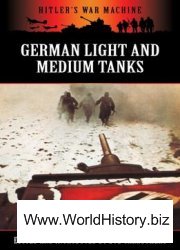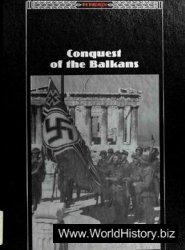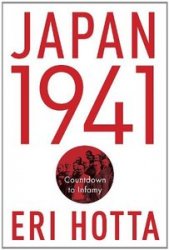After the Swedish intervention, armies across Germany adopted formations that were similar to, if not exactly the same as, the Swedish ones. The infantry abandoned deep formations very quickly, in fact many had already done so by the start of this list, but the cavalry held onto older formations for longer.
In the aftermath of the Battle of Lutzen, Wallenstein noted that the “unarmoured” cavalry (the Bandellier Reiter of this list) were the ones who had fled, whilst the armoured cavalry had stood and fought. He therefore ordered that all the cavalry be armoured and took away carbines from those that had them. However, this was not completed by the time of his assassination in 1634, and some troops carried on in the old style throughout the war.
48

Imperial pikemen, 1640, by Darko Pavlovic © Osprey Publishing Ltd. Taken from Men-at-Arms 457: Imperial Armies of the Thirty Years' War (1): Infantry and artillery.
49
INTRODUCTION LATER EIGHTY YEARS’ WAR DUTCH LATER IMPERIAL SPANISH
EARLY 17TH CENTURY FRENCH
THIRTY YEARS’WAR DANISH
EARLYTHIRTY YEARS’ WAR GERMAN PROTESTANT
EARLYTHIRTY YEARS’ WAR GERMAN CATHOUC
HUNGARIAN-TRANSYLVANIAN EARLY CAROUNE ENGLISH
EARLYTHIRTY YEARS’ WAR SWEDISH
LATER THIRTY YEARS’ WAR GERMAN
LATER THIRTY YEARS’ WAR SWEDISH AND WEIMARIAN THIRTY YEARS’WAR FRENCH
THIRTY YEARS’WAR PENINSULAR SPANISH
SCOTS COVENANTER SCOTS ROYALIST EARLY RESTORATION PORTUGUESE CONFEDERATE IRISH EARLY ENGUSH CIVIL WAR ROYALIST ENGUSH CIVIL WAR PARLIAMENTARIAN
LATER ENGUSH CIVIL WARROYAUST NEW MODEL ARMY EARLY LOUIS XIV FRENCH
APPENDIX 1-USING THEUSTS

Whilst German armies never adopted the Swedish brigade system (and in fact the Swedes themselves abandoned it around 1635 in the aftermath of the Battle of Nordlingen) regimental guns did become a feature, at least for a while.
As with most other armies of the period, armour was discarded as the campaigns wore on, especially amongst the infantry. However, the innate conservative nature of the Imperial armies meant that some regiments may have been issued with armour long after contemporaries had abandoned the practice. Veteran infantry, on the other hand, would have discarded the armour regardless. Whilst it is somewhat arbitrary, the aftermath of the Battle of Nordlingen has been taken as a cut off point, as major battles became less frequent after this, with armies just marching across Germany much of the time - an occupation that would discourage armour wearing.
Crabaten (Croats), Ungarn & Kossaken are collective terms for various light eastern type auxiliary riders of varying quality. They were found in substantial numbers mainly in Imperial armies.
|
LATER THIRTY YEARS’ WAR GERMAN STARTER ARMY | ||
|
Commander-in-Chief |
1 |
Field Commander |
|
Sub-Commanders |
2 |
2 x Troop Commander |
|
Kurassiere |
1 BG |
4 bases of Kurassiere: Superior, Heavily Armoured Horse - Impact Pistol, Melee Pistol |
|
Kurassiere |
1 BG |
4 bases of Kurassiere: Superior, Armoured Horse - Impact Pistol, Melee Pistol |
|
Bandellier Reiter |
1 BG |
4 bases of Bandellier Reiter: Average, Unarmoured, Horse - Carbine, Melee Pistol |
|
Infantry regiments |
2 BGs |
Each comprising 6 bases of infantry regiments: 2 Average, Armoured, Heavy Foot - Pike; and 4 Average, Unarmoured, Medium Foot |
|
Infantry regiments |
1 BG |
6 bases of infantry regiments: 2 Average, Armoured, Heavy Foot - Pike; and 4 Average, Unarmoured, Medium Foot - Musket; and 1 Average Regimental Gun |
|
Veteran infantry regiments |
1 BG |
6 bases of infantry regiments: 2 Superior, Armoured, Heavy Foot - Pike; and 4 Superior, Unarmoured, Medium Foot - Musket; and 1 Superior Regimental Gun |
|
Commanded shot |
1 BG |
2 bases of commanded shot: 2 Average, Unarmoured, Medium Foot - Musket |
|
Dragoner |
1 BG |
3 bases of dragoons: Average, Unarmoured, Dragoons - Musket |
|
Crabaten, Ungarn & Kossaken |
1 BG |
4 bases of ungarn: Average, Unarmoured, Light Horse - Carbine |
|
Field guns |
1 BG |
2 bases of field guns: Average Medium Artillery - Medium Artillery |
|
Camp |
1 |
Unfortified camp |
|
Total |
11 BGs |
Camp, 16 mounted bases, 31 foot bases, 3 commanders |




 World History
World History









